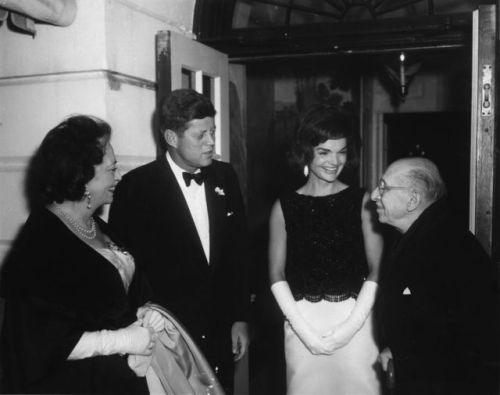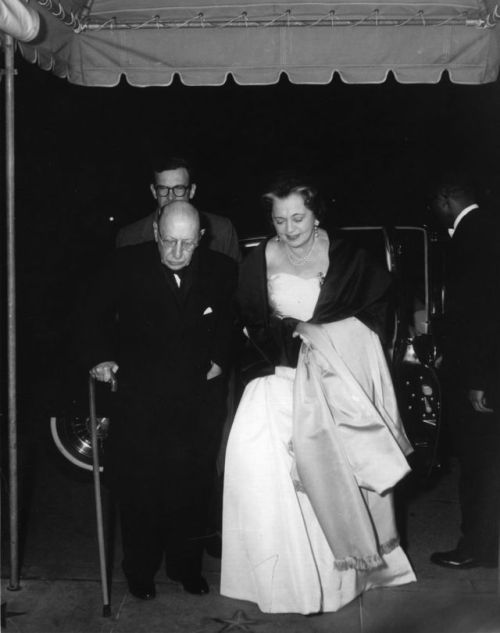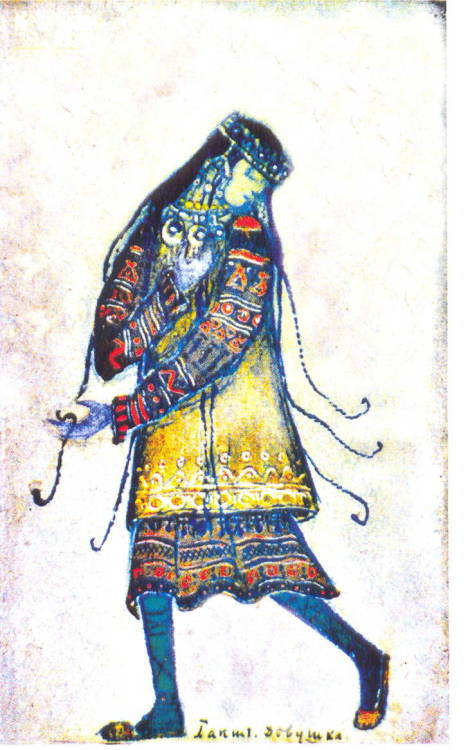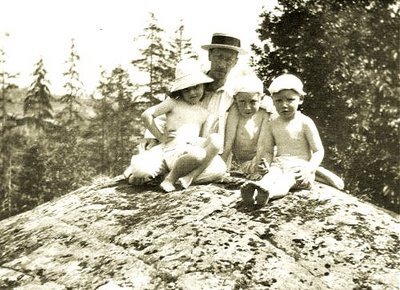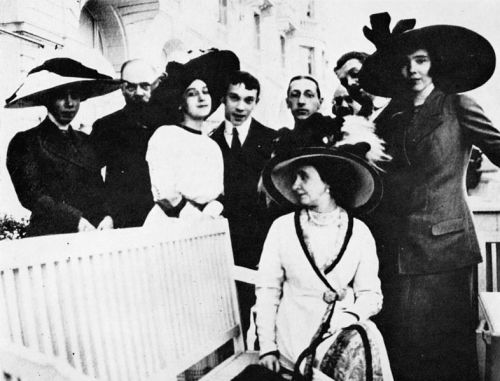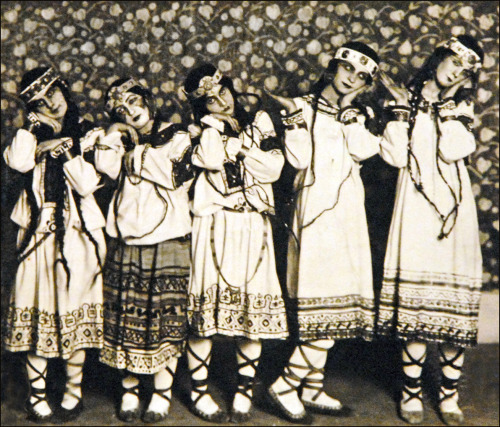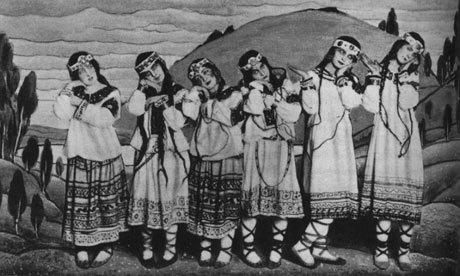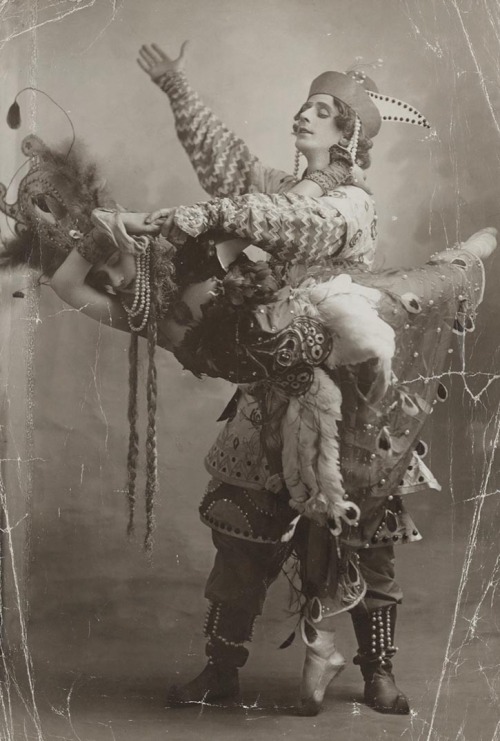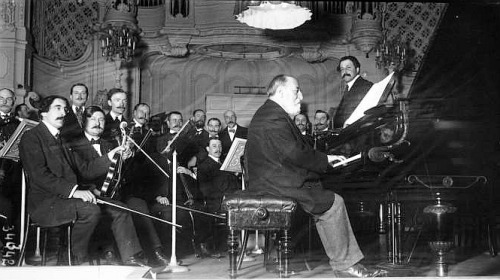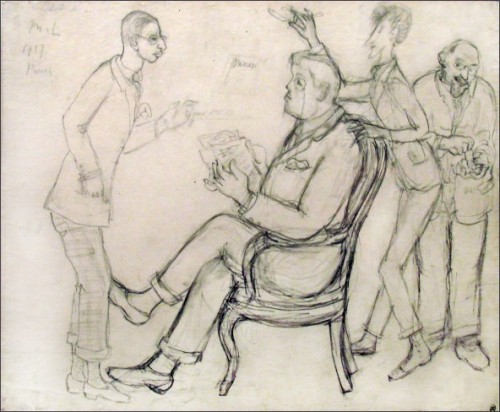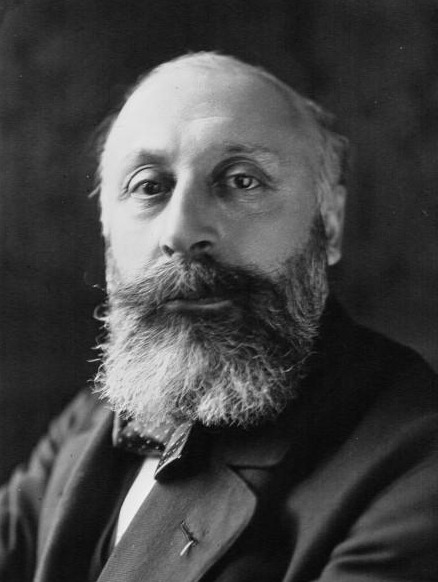#stravinsky
Auditions for spring semester are tomorrow and my professor added some weird excerpts this time I’d never heard Le Rossignol by Stravinsky before, but it’s growing on me now! Hopefully I can clean it up a bit more before tomorrow
Took a break but I finally got back into it! I’m still rusty but I’m ready to get back into regular practice and prep for grad school. This Stravinsky excerpt is on my ensemble auditions this upcoming semester, I’m so nervous
As First Lady, Jacqueline Kennedy invited artists, writers, scientists, poets, and musicians to mingle with politicians, diplomats, and statesmen at the White House. On January 18, 1962, JFK and Jacqueline Kennedy hosted a dinner in honor of composer Igor Stravinsky.
The Russian-born composer was in Washington, DC to conduct the performances of his “Oedipus Rex” by the Washington Opera Society. A White House Memo for JFK noted that although FDR had invited the composer in the 1940s, it was the first time Stravinsky would visit the White House.
More-Arts and Culture in the Kennedy White House from the JFK Library
Images:
JFK and Jacqueline Kennedy greeting composer Stravinksy and his wife Vera de Bosset Stravinsky as they arrive at the WhiteHouse. 1/18/62
Composer Igor Stravinksy and his wife Vera de Bosset Stravinsky arriving for a dinner party in their honor at the White House. 1/18/62.
Our #JFK100 theme this month is Arts, Culture, and Jacqueline Kennedy. Join us for more about Jackie all month!
Post link
A posed group of dancers (left to right: Julitska, Marie Rambert, Jejerska, Boni, Boniecka, Faithful) in the original production of Igor Stravinsky’s ballet The Rite of Spring (1913), showing costumes and backdrop by Nicholas Roerich.
Post link
Stravinsky-Three Japanese Lyrics(1913)
In different books or lectures about 20th century music, you’ll often see Schoenberg and Stravinsky pitted against each other as dominating forces. Which direction will music go? Schoenberg’s 12 tone expressionism, or Stravinsky’s polytonal/polyrhythmic irony? In my opinion, Stravinsky “won” but that’s beside the point. I think it’s a bit silly to push the outcome of musical ethos onto any one person’s shoulder. And besides, why can’t we love both composers? Here, Stravinsky takes after Schoenberg’s influence, early on in his career during the so called “Russian” period. Even so, this set of music is following the “Japanoise” trend in Europe at the time. A form of Orientalism/Exoticism, this time focused on Japan. And Stravinsky, the ever-stylish cosmopolitain, couldn’t avoid brushing with Japanoise trends in his own music. The year before, Stravinsky came upon the lyrics of some Japanese songs and poetry, and said “The impression which they made on me was exactly like that made by Japanese paintings and engravings. The graphic solution of problems of perspective and space shown by their art incited me to find something analogous in music.” And so he started writing these scene-songs. As he was working with Diaghilev on putting together the Firebird and Petrushka, he attended a performance of Schoenberg’s Pierrot Lunaire [conducted by Schoenberg himself], and though he already wrote teh first song, decided to incorporate the same kind of instrumental textures in the second and third songs. And overall this is another example of Stravinsky turning to folk music and treating music with less “subjective” and “academic” views, as the Romantics did. The set is used to transition from winter to spring. The first song opens with a rocking melody in the flute and clarinet. Soon the whole ensemble comes in with rocking, quick staccato, almost pointilist notes. The second song opens with a quick chord and run down the piano, as the instruments play in a quiet frenzy, like something nocturnal, insects running around. The third song slows us down a bit, with thin textures the soprano sings over delicate glass lines of individual instruments. The music ends in this thin texture, drifting away.
Songs:
1. Akahito
2. Mazatsumi
3. Tsaraïuki
Soprano: Susan Naricki
Chamber Ensemble: Twentieth Century Classics Ensemble
Conductor: Robert Craft

Le Sacre du Printemps (The Rite of Spring)
{ Music by Stravinsky, choreography by Nijinsky + costumes by Roerich; first performed by Diaghilev’s Ballets Russes in 1913 }
Valentine Gross-Hugo’s sketches of Nijinsky’s choreography for the Sacrificial DancefromThe Rite of Spring, 1913.
Post link
Pastel drawing by Valentine Gross-Hugo showing a moment from the end of the first scene of Le Sacre du Printemps, 1913.
Post link
Caricature drawing of Igor Stravinsky playing the music for The Rite of Spring. Jean Cocteau, 1913.
Post link
Igor Stravinsky with his children Milene, Soulima, and Theodore. Clarens, Switzerland c. 1913.
Post link
Kiss the Earth - Sketches of a set design for the ballet Le Sacre du Printemps. Nicholas Roerich, 1912.
Post link
Photo of a group of supporters and members of the Ballets Russes taken by one of its founders, Nicolas Besobrasov. From left to right, ? Botkine, Pavel Koribut-Kubitovitch, Tamara Karsavina, Vaslav Nijinsky, Igor Stravinsky, Alexandre Benois, Sergei Diaghilev, ? Botkine. Front, Alexandra Vassilieva. Beausoleil, c. 1912.
Post link
Cropped photo of Nijinsky’s sacrificial dancers.Dame Marie Rambert (1888-1982) is on the left.
Post link
Nijinsky’s “knock-kneed Lolitas” of Le Sacre. Costume and set design by Nicholas Roerich. 1913.
Post link
On Sunday afternoon of June 2nd, 1912, the influential French critic Louis Laloy invited Debussy, his wife, and Stravinsky to his home for a private reading of the first part of the not-quite-finished score for Le Sacre du Printemps. Laloy recalled the event in his memoirs:
“Debussy agreed to play the bass. Stravinsky asked if he could take his collar off. His sight was not improved by his glasses, and pointing his nose to the keyboard and sometimes humming a part that had been omitted from the arrangement, he led into a welter of sound the supple, agile hands of his friend. Debussy followed without a hitch and seemed to make light of the difficulty. When they had finished there was no question of embracing, nor even of compliments. We were dumbfounded, overwhelmed by this hurricane which had come from the depths of the ages and which had taken life by the roots.”
Igor Stravinsky and Claude Debussy in the latter’s apartment in the Avenue du Bois de Boulogne, Paris; photo by Erik Satie, June 1910. Stravinsky and Debussy performed a four-hand piano arrangement of Part I of The Rite of Spring for a private audience in June of 1912.
Post link
Camille Saint-Saëns performing Mozart at the Salle Gaveau, Pierre Monteux conducting—Paris, November 5th, 1913.
Earlier that year, Saint-Saëns was awarded France’s highest order, the Grand-Croix de la Légion d'honneur. It has often been recounted that Saint-Saëns stormed out of the première of Stravinsky’s The Rite of Spring on 29 May 1913, infuriated over what he considered the misuse of the bassoon in the ballet’s opening bars. In fact, according to Stravinsky, he was not present on that occasion, but did walk out of the first concert performance of the score, conducted by Pierre Monteux in April 1914; Saint-Saëns remarked that Stravinsky was “mad”.
Post link
Stravinsky, Diaghilev, Cocteau and Erik Satie in Paris - Mikhail Fiodorovich Larionov, 1917
Post link
Jean Cocteau in 1909, the year he met Sergei Diaghilev, who encouraged him to venture into the genre of ballet. Cocteau wrote the story for Le Dieu bleu which premiered in May of 1912. A year later, he was in attendance at the premiere of The RIte of Spring, and remarked, rather scathingly, of the crowd “the smart audience in tails and tulle, diamonds and ospreys, was interspersed with the suits and bandeaux of the aesthetic crowd. The latter would applaud novelty simply to show their contempt for the people in the boxes… Innumerable shades of snobbery, super-snobbery and inverted snobbery were represented.”
Post link
Gabriel Astruc, French journalist, agent, promoter, theatre manager, theatrical impresario and founder of the Théâtre des Champs-Élysées, where the first performance of Stravinsky’s The Rite of Spring was staged in 1913.
Post link
Fazıl Say & BSO
2-3 Temmuz 2022 Cumartesi-Pazar, 20:00
Bilkent Odeon
- Webern | Langsamer Satz
- Stravinsky | Ateşkuşu
- Schumann | Piyano Konçertosu
Post link

